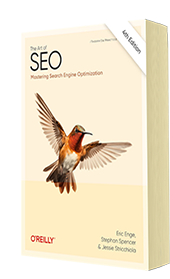How to Strengthen a Site via Title Tag Strategies, Part 1: The Basics
Why is it that one of the most important elements of a Web site’title tags,which also tends to be one of the easiest to manage, is so often done incorrectly? What makes that shortcoming even more amazing is that SEO practitioners constantly talk about title tags.
In fact, if ever there could be an area of universal or near-universal agreement in the SEO community, it would be in regard to the importance of title tags.
We know that all major search engines use the contents of the title tag as the title of their search snippets in nearly all cases (there are rare exceptions): The title appears in a larger font size and as a blue hyperlink above the search-result description. Therefore, the title tag serves as a strong influencer of click-through as searchers hone in on references to their search phrases.
Perhaps more importantly, in relation to getting the title into the results for searchers to even consider clicking on, search engines use the title tag behind the scenes as one of the leading signals for determining what a page is about.
As critical as title tags are, the basics for optimizing them are quite simple. Because of the importance that search engines place on the title tag, getting this even partially right can have real impact for a site. Sadly, though, far too many sites fail to get it right.
Placement and Location
Title tags are different from most Web page elements because they are actually contained within the head section of the code and don’t actually appear on the Web page. Though there may be similar or identical text on the page, that text doesn’t come from the title tag.
The content (text) of the title tag does appear in the top “chrome” area of the browser window, and if the page is bookmarked in a browser the tag text typically becomes the default text (bookmark name). And, as noted above, it nearly always appears as the snippet title in the search results.
Uniqueness
Most of us, at one point or another, have been told something along these lines: “If you walk away understanding only one thing from I’m saying, then this is it.” Hopefully, I’ll be able to explain more than just one thing well enough… but, just in case, we’d better get that one thing out on the table right now: Make the title tag unique.
Or, put another way: No two pages of a Web site should have the same title tag.
Remember, the title of a page is a, if not the, key signal of what that page is all about. Therefore, if there are two or more pages with the same title tag, then search engines are likely to consider those pages to be the same.
Keywords
Once we’ve grasped the importance of uniqueness, the next key concept is the use of keywords. Fortunately, this part makes sense to a lot of people, since it is the text within title tags that serves as a signal to search engines. That, however, does not mean that more is better.
The reality is that most of the answers to the question of quantity are wrong, or at least not entirely correct. There is no magic quantity. Every page, every site, every industry is different, and many other elements come into play as well.
The right quantity of a keyword’s presence may be as little as one instance, or it may be as much as two, three, or four. However, it is probably best not to go beyond that… as it may appear to be keyword-stuffed. So, there is such a thing as too much of a good thing.
Also keep in mind that only about 65 characters are actually visible in most search results, so anything beyond that probably isn’t going to be visible. Obviously, search engines know this as well, so it is likely that they have greatly decreased the value of anything beyond that point to avoid being “gamed.”
Keep in mind that it makes sense to avoid “unnecessary” words, making sure that each word carries the most value. Imagine a title tag with 10 words in it. A simple way to think about it is that each word shares 1/10 the value of the title tag; therefore, each additional word may dilute the value of each word.
As we’ll see next, the formula isn’t quite that simple, but it helps to get the idea across.
Prominence and Density
Along with keywords and quantity come the concepts of prominence and density’the percentage of keywords to the rest of the text. Often, the question of density morphs back into the question of quantity,and the idea that some magic number is the key.
Rather than trying to calculate density, it is probably better to just focus on how it sounds: Say the title tag out loud and see whether it sounds good, or silly or downright stupid because of too many repetitions of the keywords.
Prominence, on the other hand, deals with the relationship of position and importance. In relation to title tags, this means that those words used toward the beginning of the title tag are believed to be more important and a better signal to search engines as to what the page is about.
* * *
Now would be a good time to review the current title tags of your site. How well are these basics being covered? Do you see any areas for easy improvement?
Next time, we’ll cover some more-advanced elements of title tag strategies.
Read Part 2: Title Tag Strategies – Advanced Tactics

Chapter 6:
Keyword Research
From the fundamentals of link building to the nuances of natural linking patterns, virality, and authority.
Related Posts

Embrace Journaling, Tackle Tardiness, and Explore Our Energetic Echo
Here’s what I found inspirational, challenging, or just downright hilarious this week. What caught your eye? And, remember to check out this week’s great podcast episodes: Scaling a SaaS Company with Jason Morehouse “A crucial factor to business success is to find and take the personal path that works best for you.” — Jason Morehouse […]
Read More
Harrison’s harmony, conquering a blank canvas, & gut health hacks
Here’s what I found inspirational, challenging, or just downright hilarious this week. What caught your eye? And, remember to check out this week’s great podcast episodes: Be a Sales Game Changer with Fred Diamond “True elite sales professionals develop a dedicated mindset, proactive client interaction, and continuous self-preparation. They understand their client’s needs and enable […]
Read More
Rebirth of sleeper trains, 4,000 weeks is a long/short time, and golden age for medicine
Here’s what I found inspirational, challenging, or just downright hilarious this week. What caught your eye? And, remember to check out this week’s great podcast episodes: A Story Worth Retelling with Luke Storey “Aligned values are the cornerstone of successful partnerships, whether in business or life, as they shape our moral code, define our priorities, […]
Read More
